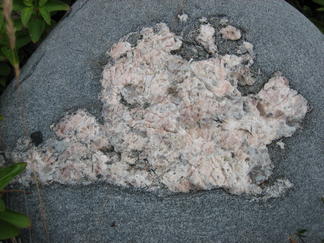 The International Geological Congress (IGC) is sometimes referred to as the geologists’ equivalent of the Olympic Games and is an extremely large gathering of geologists from all over the world, taking place at 4-year intervals. This time, the IGC took place in Lillestrøm, a small place just outside Oslo, Norway (August 6-14). The congress was opened by the Norwegian King (before he continued to the real games in Beijing), and was attended by some 6,000 scientists from 113 countries. Even the Danish Minister of Energy & Climate participated in a panel discussion on climate change. In other words, this was a serious meeting.
The International Geological Congress (IGC) is sometimes referred to as the geologists’ equivalent of the Olympic Games and is an extremely large gathering of geologists from all over the world, taking place at 4-year intervals. This time, the IGC took place in Lillestrøm, a small place just outside Oslo, Norway (August 6-14). The congress was opened by the Norwegian King (before he continued to the real games in Beijing), and was attended by some 6,000 scientists from 113 countries. Even the Danish Minister of Energy & Climate participated in a panel discussion on climate change. In other words, this was a serious meeting.
Communicating Climate
Bridging the divides
 We often discuss the issues that arise in doing interdisciplinary work in climate science, and Liz Moyer and I have a commentary on that just out in Nature Reports Climate Change. Normally I don’t mention these kinds of pieces on the blog, but in this case the editors commissioned a nice cartoon (from Mark Roberts) illustrating our point. I liked the cartoon a lot, and so it deserves as wide an audience as possible.
We often discuss the issues that arise in doing interdisciplinary work in climate science, and Liz Moyer and I have a commentary on that just out in Nature Reports Climate Change. Normally I don’t mention these kinds of pieces on the blog, but in this case the editors commissioned a nice cartoon (from Mark Roberts) illustrating our point. I liked the cartoon a lot, and so it deserves as wide an audience as possible.
A bit of context is probably useful. The three main protagonists are representative of the somewhat different foci of paleo-climatologists, climate modellers and economists. Very broadly speaking, paleo-climate science is built around the analysis of single location time series (often from holes that are drilled). Climate modellers spend a lot of time trying to see what is coming up in all its complexity, while economists tend to eschew complexity and look for insight in highly idealised situations. But in order to increase the credibility of models, they have to do well at simulating past climates and what might happen in the future is certainly informed by what has happened in the past. And in order to better understand the impacts of climate change and various proposed policies, economists will need to embrace the complexity of human-climate interactions while modellers need to better understand what aspects of climate really do make a difference. None of these things will happen if we continue to all look in different directions, and more problematically, fail to support and reward those scientists who want to bridge the divides. Sea monsters notwithstanding.
Journalistic whiplash
 )
) Andy Revkin has a good article in the Science Times today on the problem of journalistic whiplash in climate change (also discussed here). This phenomena occurs with the more uncertain parts of a science that are being actively researched and where the full story is only slowly coming together. In such cases, new papers often appear in high profile journals (because they meet the ‘of general interest’ test), and are often parsed rather simplistically to see what side of the fence they fall – are they pro or anti? This leads to wide press interest, but rather shallow coverage, and leaves casual readers with ‘whiplash’ from the ‘yes it is’, ‘no it isn’t’ messages every other week.
This is a familiar pattern in health reporting (is coffee good for you/bad for you etc.), but in more recent times has started happening in climate science too. Examples picked out in the article include the hurricanes/global warming connection and the state of Greenland’s ice sheet. In both cases, many new pieces of evidence, new theories and new models are being thrown into the pot, but full syntheses of the problems remain elusive. Scientists are of course interested in knowing how it all fits together (and it usually does), but the public – unaware of what is agreed on and what is uncertain – see only the ping-pong across the media. Unlike more mature parts of the science (such as the radiative effect of greenhouse gases), there is much less context available to relate to these new pieces of science.
This spectacle of duelling and apparently contradictory science fuels the notion that scientists can’t agree on anything. Ironically, just as climate change has made it on to the front page because the weight of evidence supporting a human role in recent warming, increased coverage may actually be leading people to think that scientists are more divided on the basic questions.
Is this inevitable? Or can scientists, press officers and journal editors and journalists actually do anything about it? Your thoughts are most welcome!
Once more unto the bray
We are a little late to the party, but it is worth adding a few words now that our favourite amateur contrarian is at it again. As many already know, the Forum on Physics and Society (an un-peer-reviewed newsletter published by the otherwise quite sensible American Physical Society), rather surprisingly published a new paper by Monckton that tries again to show using rigorous arithmetic that IPCC is all wrong and that climate sensitivity is negligible. His latest sally, like his previous attempt, is full of the usual obfuscating sleight of hand, but to save people the time in working it out themselves, here are a few highlights.
All-paper salutes to the environment
The Onion last week had a great (recycled) spoof on the various ‘green’ special issues being published but, not to be outdone, the contributors to RealClimate have also been busy producing paper products about the environment.
Surprisingly perhaps, as well as having day jobs and writing for this blog, collectively we have written a number of popular science books about climate change. Some of these have already been published, but there are a few more “in the pipeline”. We try not to overdo self-promotion on this website (for instance, we don’t blog about most of our own technical publications) but since these projects are synergistic with our aims here, it makes sense to let people know what we’ve been up to. We have therefore set up a page listing “Our Books” that we will keep up-to-date as more titles become available. It’s also linked from the new animated gif image on the side bar.
North Pole notes
I always find it interesting as to why some stories get traction in the mainstream media and why some don’t. In online science discussions, the fate of this years summer sea ice has been the focus of a significant betting pool, a test of expert prediction skills, and a week-by-week (almost) running commentary. However, none of these efforts made it on to the Today program. Instead, a rather casual article in the Independent showed the latest thickness data and that quoted Mark Serreze as saying that the area around the North Pole had 50/50 odds of being completely ice free this summer, has taken off across the media.
More PR related confusion
It’s a familiar story: An interesting paper gets published, there is a careless throwaway line in the press release, and a whole series of misleading headlines ensues.
This week, it’s a paper on bromine- and iodine-mediated ozone loss in marine boundary layer environments (see a good commentary here). This is important for the light that it shines on tropospheric ozone chemistry (“bad ozone”) which is a contributing factor to global warming (albeit one which is about only about 20% as important as CO2). So far so good. The paper contains some calculations indicating that chemical transport models without these halogen effects overestimate ozone near the Cape Verde region by about 15% – a difference that certainly could be of some importance if it can be extrapolated across the oceans.
However, the press release contains the line
Large amounts of ozone – around 50% more than predicted by the world’s state-of-the-art climate models – are being destroyed in the lower atmosphere over the tropical Atlantic Ocean.
(my highlights). Which led directly to the headlines like Study highlights need to adjust climate models.
Why is this confusing? Because the term ‘climate models’ is interpreted very differently in the public sphere than it is in the field. For most of the public, it is ‘climate models’ that are used to project global warming into the future, or to estimate the planet’s sensitivity to CO2. Thus a statement like the one above, and the headline that came from it are interpreted to mean that the estimates of sensitivity or of future warming are now in question. Yet this is completely misleading since neither climate sensitivity nor CO2 driven future warming will be at all affected by any revisions in ozone chemistry – mainly for the reason that most climate models don’t consider ozone chemistry at all. Precisely zero of the IPCC AR4 model simulations (discussed here for instance) used an interactive ozone module in doing the projections into the future.
What the paper is discussing, and what was glossed over in the release, is that it is the next generation of models, often called “Earth System Models” (ESMs), that are starting to include atmospheric chemistry, aerosols, ozone and the like. These models may well be significantly affected by increases in marine boundary layer ozone loss, but since they have only just started to be used to simulate 20th and early 21st Century changes, it is very unclear what difference it will make at the large scale. These models are significantly more complicated than standard climate models (having dozens of extra tracers to move around, and a lot of extra coding to work through), are slower to run, and have been used much less extensively.
Climate models today are extremely flexible and configurable tools that can include all these Earth System modules (including those mentioned above, but also full carbon cycles and dynamic vegetation), but depending on the application, often don’t need to. Thus while in theory, a revision in ozone chemistry, or soil respiration or aerosol properties might impact the full ESM, it won’t affect the more basic stuff (like the sensitivity to CO2). But it seems that the “climate models will have to be adjusted” meme is just too good not to use – regardless of the context.
How to cook a graph in three easy lessons
 These days, when global warming inactivists need to trot out somebody with some semblance of scientific credentials (from the dwindling supply who have made themselves available for such purposes), it seems that they increasingly turn to Roy Spencer, a Principal Research Scientist at the University of Alabama. Roy does have a handful of peer-reviewed publications, some of which have quite decent and interesting results in them. However, the thing you have to understand is that what he gets through peer-review is far less threatening to the mainstream picture of anthropogenic global warming than you’d think from the spin he puts on it in press releases, presentations and the blogosphere. His recent guest article on Pielke Sr’s site is a case in point, and provides the fodder for our discussion today.
These days, when global warming inactivists need to trot out somebody with some semblance of scientific credentials (from the dwindling supply who have made themselves available for such purposes), it seems that they increasingly turn to Roy Spencer, a Principal Research Scientist at the University of Alabama. Roy does have a handful of peer-reviewed publications, some of which have quite decent and interesting results in them. However, the thing you have to understand is that what he gets through peer-review is far less threatening to the mainstream picture of anthropogenic global warming than you’d think from the spin he puts on it in press releases, presentations and the blogosphere. His recent guest article on Pielke Sr’s site is a case in point, and provides the fodder for our discussion today.
[Read more…] about How to cook a graph in three easy lessons
The Global Cooling Bet – Part 2
 ) (
) ( ) (
) ( )
) Last week we proposed a bet against the “pause in global warming” forecast in Nature by Keenlyside et al. and we promised to present our scientific case later – so here it is.
Impressions from the European Geophysical Union conference 2008
 Last week, the European Geophysical Union held its annual general assembly, with thousands of geophysicists converging on the city of Vienna, Austria. It was time to take the pulse of the geophysical community.
Last week, the European Geophysical Union held its annual general assembly, with thousands of geophysicists converging on the city of Vienna, Austria. It was time to take the pulse of the geophysical community.
[Read more…] about Impressions from the European Geophysical Union conference 2008